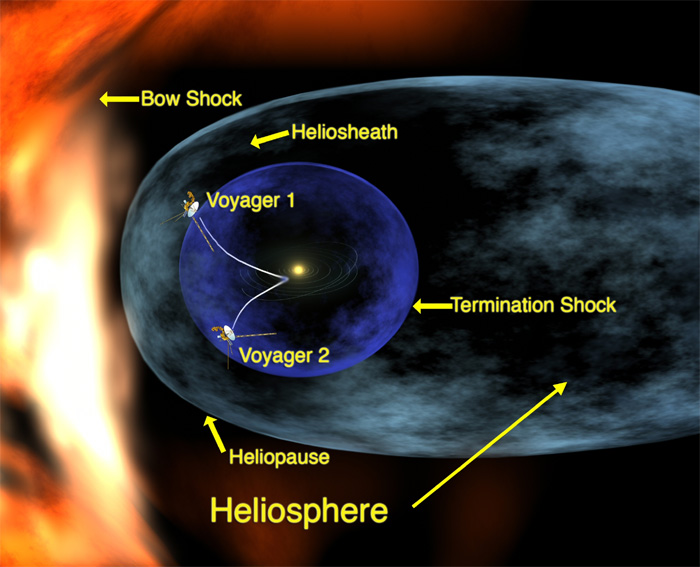Needless to say, as one of two deep space probes launched in 1977, Voyager 1 has explored previously unknown regions of the solar system, making groundbreaking discoveries as it went. Now, in a new paper published in the Journal of Geophysical Research, scientists analyzing data streaming from the spacecraft have uncovered a small mystery right at the solar system's magnetic boundary with the interstellar medium. She may be old, but you can't keep a good probe down.
As the sun travels through the galaxy, it carries its magnetic field with it, creating a magnetic "bubble" -- the heliosphere -- that all planets, spacecraft and people live inside. Until recently, Voyager 1 (and her sister probe Voyager 2) have also existed completely inside the sun's environment. Both probes could detect the high energy particles streaming from the sun and they 'felt' the solar magnetic field. At time of writing, Voyager 1 is nearly 122 AU from the sun (over three times the average Pluto-sun distance) and it takes over 17 hours for a signal to travel from the probe to Earth.
So, in an effort to detect when the Voyager probes might exit the heliosphere, scientists have kept a watchful eye on two key pieces of data -- particle energy counts and magnetic field strength (and orientation).
In 2004, scientists realized that Voyager 1 had traveled through the "termination shock" -- a region where the solar wind begins to interact with the interstellar medium. Then, in 2010, the probe crossed into a stagnation region just beyond the termination shock known as the "heliosheath" -- this is where the solar wind slows to zero and the magnetic field becomes compressed and begins to fluctuate.
According to theory, as the magnetic field begins to fluctuate, the number of high-energy cosmic rays should decrease inside the heliosheath -- charged cosmic rays entering the solar system should become scattered by the magnetic fluctuations, decreasing the number of detections by Voyager 1. Looking at data through 2010, the researchers actually found the opposite to be true -- as the magnetic field became more chaotic, the number of high-energy particles increased.
What's the reason for this weirdness? According to an AGU press release, the researchers suspect that these magnetic fluctuations are somehow energizing charged particles within the heliosheath, boosting the number of high-energy particle detections.





My Dad Launched That!
Though he was killed in 1985, age 54, which is almost what I am now, I'm still damn proud of him and know I'm lucky to have known him.
R.C.
Sorry for the personal aspects, but he was the type man all too rare these materialistic days....
RC